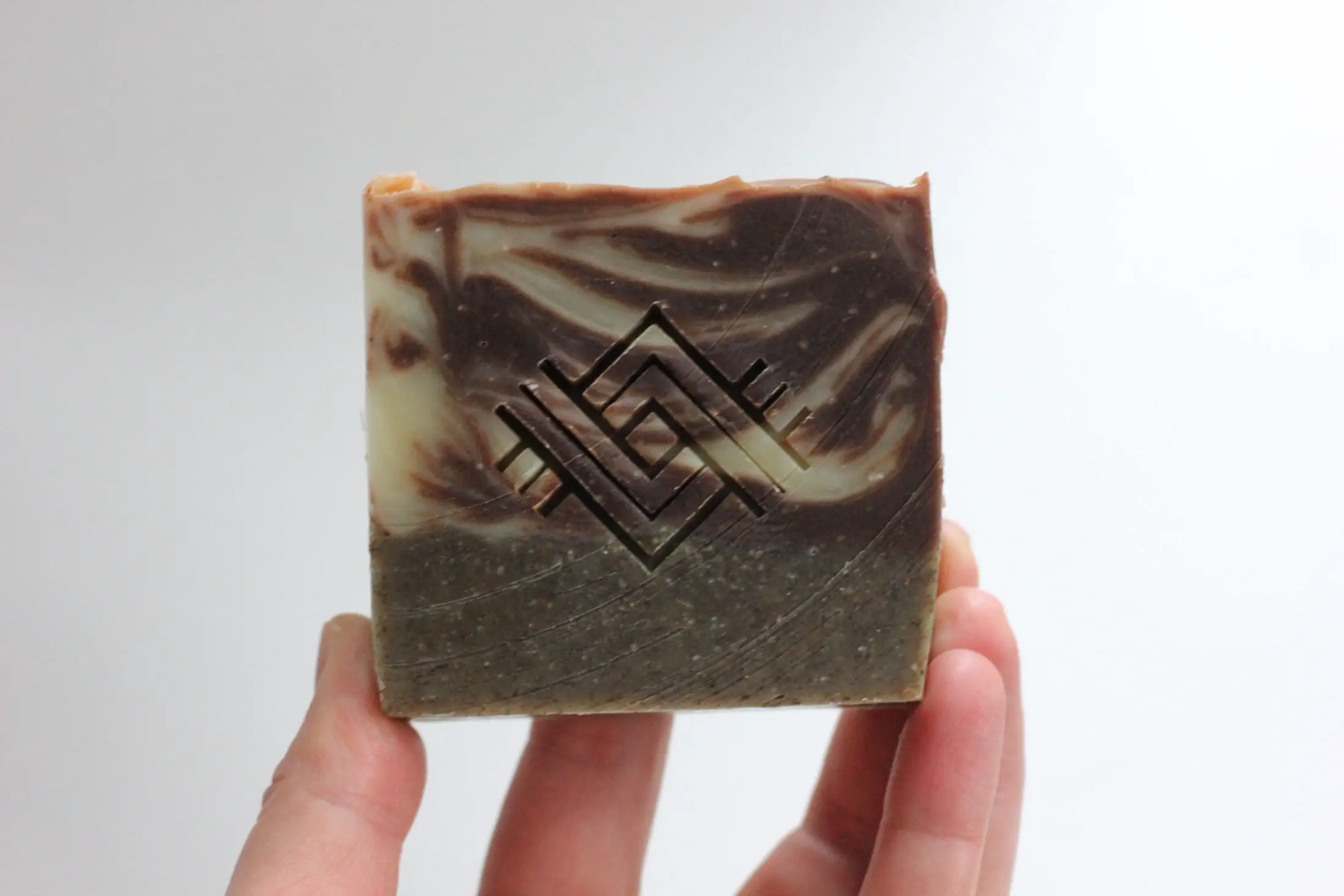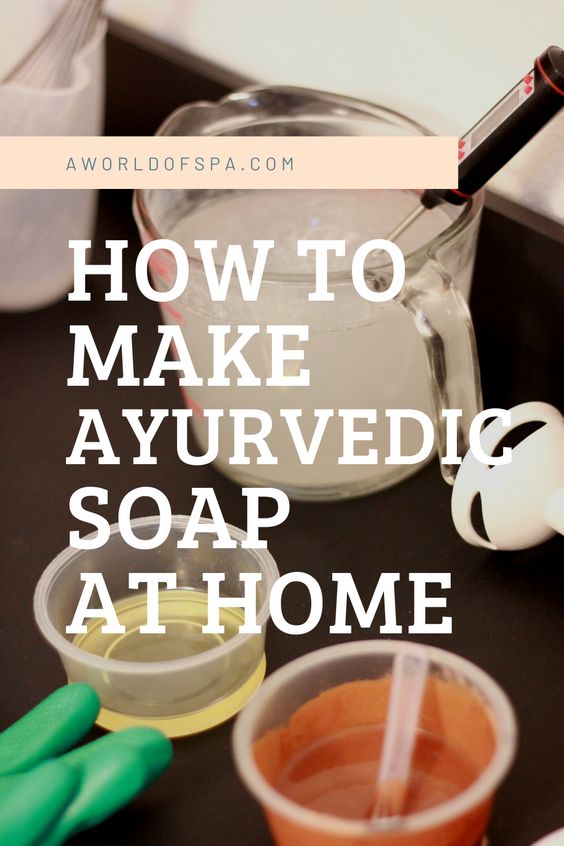
Ayurveda is an ancient medicine system deeply rooted in Indian history. What are the effects of ayurvedic herbs on the skin + how to Make Ayurvedic Soap at Home
Ayurveda is an ancient alternative medicine system deeply rooted in Indian history. The ancient knowledge of medicinal herbs is present in our modern daily life too.
In this post, we would like to share a fraction of the information about the effects of ayurvedic herbs on the skin and how to combine them in natural soap making to enrich the soap’s properties and add a visual effect.
Most commonly used ayurvedic herbs in natural cosmetics
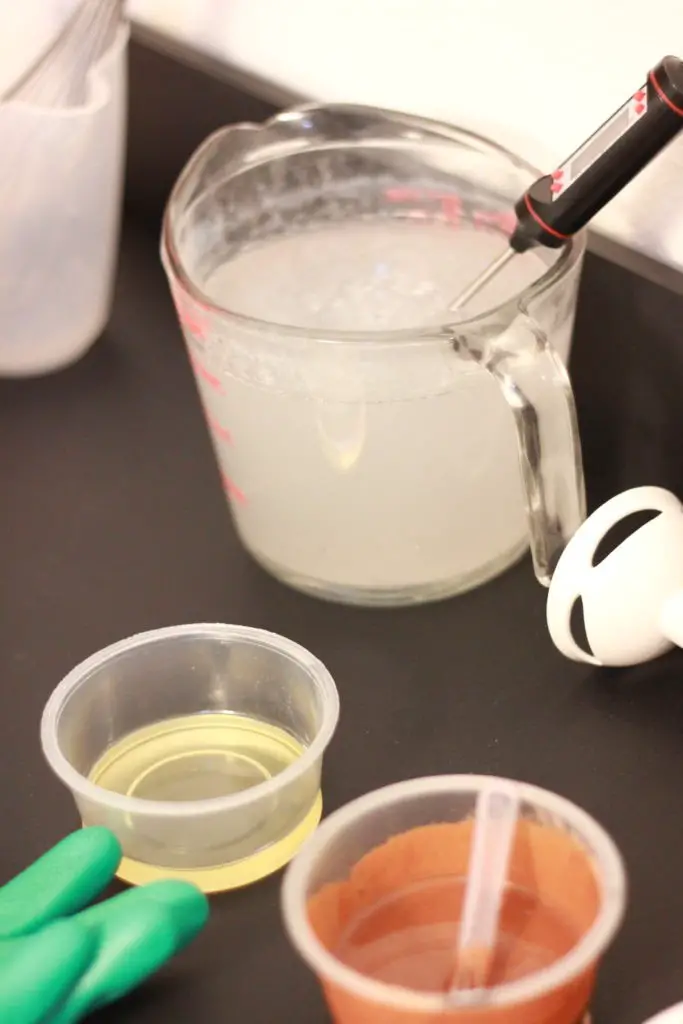
Disclosure: Some of our articles contain affiliate links (as an Amazon affiliate I earn from qualifying purchases).
- Amla (Emblica officinalis fruit) powder is used to brighten the complexion and purity of the skin. It is rich in Vitamin C and is also used for prevention of hair loss.
- Ashwagandha (Withania somnifera) powder, also known as Indian Ginseng, ideal for anti-aging treatments due to high content of antioxidants. It is also a very soothing and toning ingredient for skin care.
- Hibiscus (Hibiscus sabdariffa) is rich in antioxidants and fruit acids which makes it a perfect anti-aging ingredient. It also helps to strengthen the hair.
- Sacred Lotus (Nelumbo nucifera seed) powder carries Ayurvedic transition for restoring inner strength. It cares for dull, tired skin, soothes dry and sensitive skin.
- Nagarmotha (Cyperus rotundus) has repairing and conditioning properties.
- Neem (Azadirachta Indica) powder has purifying ingredients. It helps to eliminate toxins, helps to regulate sebum and is a perfect choice for acne prone or oily skin.
- Orange (Citrus aurantium) powder is a great cleaning ingredient, especially for oily and acne prone skin.
- Reetha (Sapindus mukorossi) powder makes a purifying cleansing treatment for oily and blemish-like skin.
- Damascus rose (Rosa damascena) improves and maintains the elasticity of the skin.
Ayurvedic Soap Recipe – How to Make Ayurvedic Soap at Home
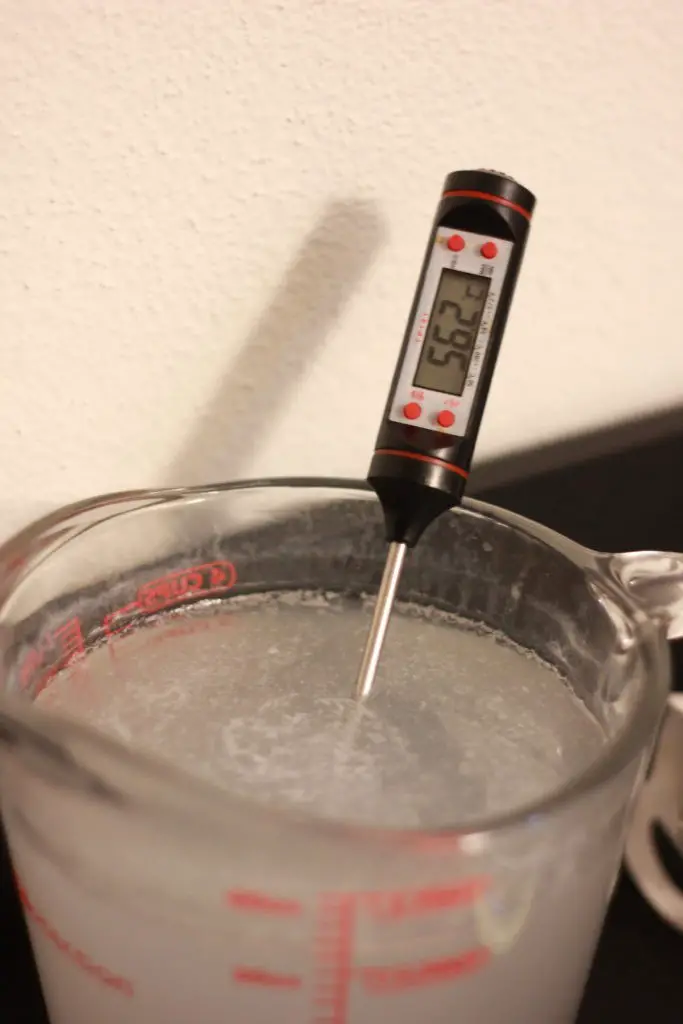
Today we want to share the recipe of our Ayurvedic Neem, reetha, and hibiscus soap. This combination of herbs makes a gently cleansing and purifying soap.
We will also add neem oil, which is amazing for oily and acne-prone skin. You can add your favorite essential oil blend, but we recommend a combination of patchouli, sweet orange, and clary sage to enhance the musky, oriental effect of this soap bar.
You will need
- Rubber gloves
- Precision scales (0.1 g)
- Pyrex jar or beaker
- Stainless steel whisk
- Regular cooking pot (only for melting fats)
- Large plastic bowl
- Cooking thermometer
- Other 2-3 small containers
- Plastic immersion blender (aluminium can lose its shininess in the process)
- Mould for the soap (any reused plastic tub or silicone form will do)
This recipe is for around 5 soap bars (90 g each) with 6% Superfat (not saponified fats)
Ayurvedic Soap Ingredients
- Sodium hydroxide (caustic soda, NaOH) 55 g
- Water 144 g
- Olive oil 200 g
- Coconut oil 120 g
- Shea butter 60 g
- Neem Oil 20 g
- Neem powder 10 g
- Reetha powder (soap nut) 5g
- Hibiscus powder 5g
- Patchouli essential oil 3g
- Sweet orange essential oil 2g
- Clary sage essential oil 1g
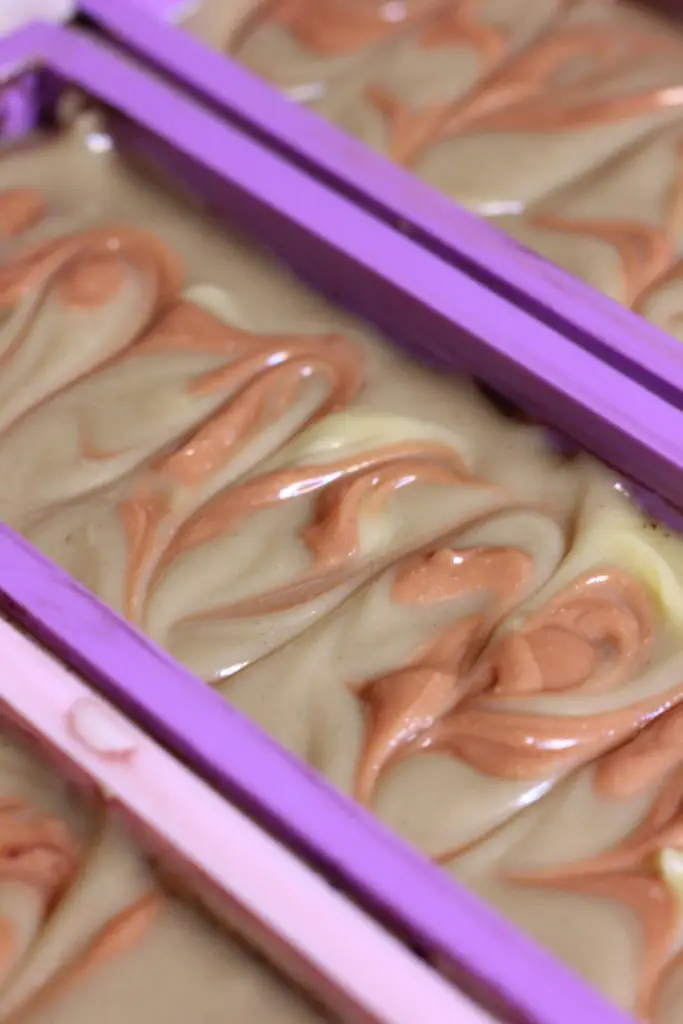
Procedure
- Weigh separately the sodium hydroxide (in a small dry container) and water (in the pyrex beaker)
- Slowly pour the sodium hydroxide into the water in a well ventilated place and mix with the whisk until the sodium hydroxide is completely dissolved (this solution is called lye). Be careful, as this will become quite hot while dissolving! Set aside to cool down.
- Weigh the solid fats (coconut oil and shea butter) and slowly melt them in the cooking pot over low heat.
- Weigh the olive and neem oil in the plastic bowl.
- Weigh neem powder in a small container and reetha and hibiscus powders in another container.
- Weigh essential oils.
- Pour the melted fats into the olive oil, mix well and check the temperature.
- When the temperatures of the oil mixture and of the lye both reach 35-50°C (ideally 40°C) pour the sodium hydroxide solution into the oils and start blending with short bursts.
- When the mixture reaches a homogeneous and slightly creamy texture (trace), it means that the saponification reaction has started.
- Separate the mixture into two parts and add the neem powder in one part and reetha and hibiscus powder in another part. Blend both separately.
- Pour first part (with neem powder) and then slowly pour the second part (with reetha and hibiscus powders) on top.
- Cover the mould and leave to rest for 24-48 hours.
- When the soap feels solid enough, unmould it and cut it into pieces as you like.
- Place the soaps in a dark, well ventilated area to cure for at least 4 weeks.
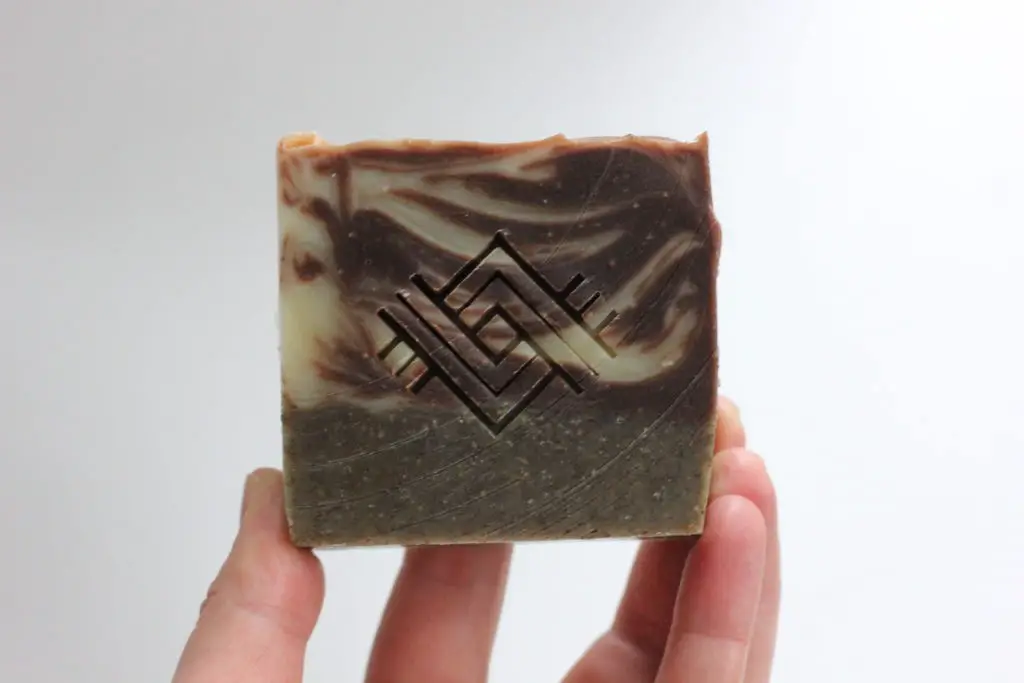
Please be extra careful when handling sodium hydroxide (caustic soda, NaOH), as it is a very alkaline (basic) ingredient and can cause burns on your skin. Wear gloves during all the making process.
There is no sodium hydroxide left in the final product when the saponification process is finished.
We hope you enjoy our recipe and please contact us if you have any questions.
Have a Look at this DYGO Solid Shampoo with Ayurvedic orange powder
Print the Recipe Here:
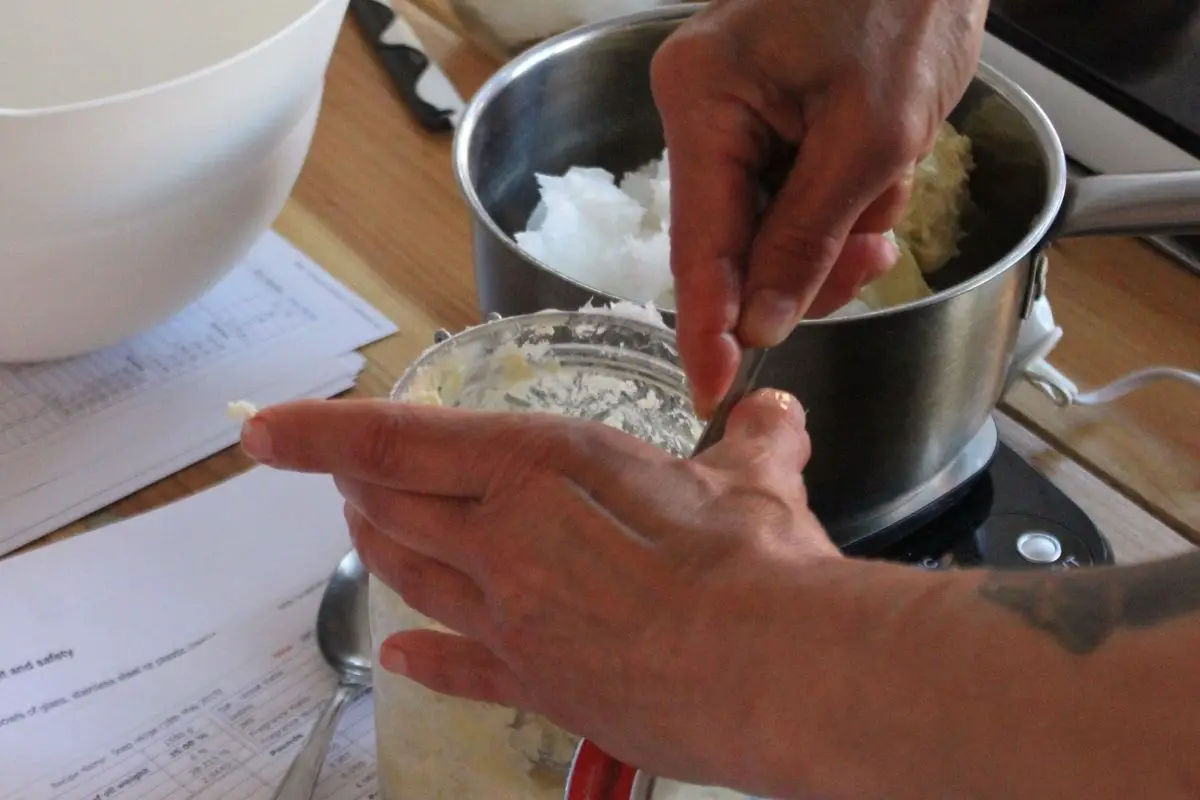
DIY Ayurvedic Soap Recipe - How to Make Ayurvedic Soap at Home
In this post, we would like to share a fraction of the information about the effects of ayurvedic herbs on the
Instructions
- Weigh separately the sodium hydroxide (in a small dry container) and water (in the pyrex beaker)
- Slowly pour the sodium hydroxide into the water in a well ventilated place and mix with the whisk until the sodium hydroxide is completely dissolved (this solution is called lye). Be careful, as this will become quite hot while dissolving! Set aside to cool down.
- Weigh the solid fats (coconut oil and shea butter) and slowly melt them in the cooking pot over low heat.
- Weigh the olive and neem oil in the plastic bowl.
- Weigh neem powder in a small container and reetha and hibiscus powders in another container.
- Weigh essential oils.
- Pour the melted fats into the olive oil, mix well and check the temperature.
When the temperatures of the oil mixture and of the lye both reach 35-50°C (ideally 40°C) pour the sodium hydroxide solution into the oils and start blending with short bursts. - When the mixture reaches a homogeneous and slightly creamy texture (trace), it means that the saponification reaction has started.
- Separate the mixture into two parts and add the neem powder in one part and reetha and hibiscus powder in another part. Blend both separately.
- Pour first part (with neem powder) and then slowly pour the second part (with reetha and hibiscus powders) on top.
- Cover the mould and leave to rest for 24-48 hours.
- When the soap feels solid enough, unmould it and cut it into pieces as you like.
- Place the soaps in a dark, well ventilated area to cure for at least 4 weeks.
Notes
Please be extra careful when handling sodium hydroxide (caustic soda, NaOH), as it is a very alkaline (basic) ingredient and can cause burns on your skin. Wear gloves during all the making process.
What are the 3 main ingredients in soap?
The main ingredients to make Ayurvedic soap at home are Sodium hydroxide, oil and water. The use of essential oils is very common, to colour or scent the final product
What is ayurvedic soap?
Ayurveda is an ancient alternative medicine system deeply rooted in Indian history. The effects of Ayurvedic herbs on the skin can be combined in natural soap making to enrich the soap’s properties and add a visual effect.
What is ayurvedic soap good for?
Ayurvedic soap enriches the soap’s properties and add a visual effect. Here some of the benefits of the most popular herbs used in Ayurvedic Soap making:
Amla powder is used to brighten the complexion and purity of the skin. It is rich in Vitamin C and is also used for prevention of hair loss.
Ashwagandha powder, also known as Indian Ginseng, ideal for anti-aging treatments due to high content of antioxidants. It is also a very soothing and toning ingredient for skin care.
Hibiscus is rich in antioxidants and fruit acids which makes it a perfect anti-aging ingredient. It also helps to strengthen the hair.
Sacred Lotus powder carries Ayurvedic transition for restoring inner strength. It cares for dull, tired skin, soothes dry and sensitive skin.
Nagarmotha has repairing and conditioning properties.
Neem powder has purifying ingredients. It helps to eliminate toxins, helps to regulate sebum and is a perfect choice for acne prone or oily skin.
Orange powder is a great cleaning ingredient, especially for oily and acne prone skin.
Reetha powder makes a purifying cleansing treatment for oily and blemish-like skin.
Damascus rose improves and maintains the elasticity of the skin.
Interested in Homemade Soap?
More about the Ayurvedic Approach?


